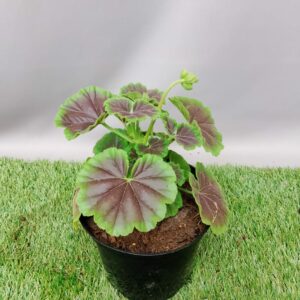The secret to show-stopping statement pots
DIY and how-to

If you’ve been toying with the idea of adding a large planter to your garden or indoor container garden, let this be your cue to put that idea in motion. Large pots or containers add a striking focal point to your home, and are just one of the ways to bring more structure to your garden story.
With our step-by-step guide to planting big pots, you don’t need to be a landscaper or interior designer to get it right. Read on for big planter ideas and tips for large container gardening that will reward you with show-stopping statement pots, whether in your garden, on your balcony, or indoors.
What to plant in oversized containers
Your choice of plant for a large pot should be carefully considered.
If you’re planning to add a large container to your garden, you can’t go wrong with the resilience of a water-wise indigenous plant.
These options make great focal points and are some of the best plants for big garden containers:
Flowering shrubs can also help add a beautiful pop of colour and serve as a nice filler for your garden landscape; they just need pruning now and then to maintain their size. Think bougainvillea, lavender, hibiscus, or hydrangeas.
For shadier spots, and indoor gardening, croton, ficus, fiddle leaf, delicious monster, philodendron and bamboo palm add texture and greenery.
Best soil for large pots
Garden pot drainage is probably the most important consideration when planting in large pots, as you want your plant’s root system to stay healthy and grow, without risking root rot as a result of waterlogged soil.
You may be surprised to learn that not just any old garden soil will do for planting in large pots. It’s too dense and will compact easily, leading to poor drainage, poor aeration and eventually root rot.
Ideally, you should use a good-quality, well-draining potting mix or potting medium; look for a lightweight, airy option that has a balance of good drainage and enough moisture retention.
How to fill large planters without wasting soil
Because you’re working with a large container or pot, there’s a lot of volume that needs to be filled to set your plant up for success. Do you need to fill the entire pot with potting soil? Not necessarily.
For a plant that has a large, deep root system – like hydrangeas, hibiscus, agapanthus, bougainvillea – adding a small layer of medium-sized rocks to the bottom of the plant pot before adding soil will lower the risk of soil clogging the pot’s drainage holes, and still leave room for enough potting soil for the plant to grow unrestricted.
For plants with a shallow root system, first prize is to fill out at least half of the volume of the pot with something that has structure but ideally won’t add too much weight to the pot in case you’d like to move it around in the future.
Be resourceful with lightweight fillers for large planters and use items lying around at home that you’d normally recycle, like old tins, 2-litre bottles, supermarket fresh produce container or tubs. Once these items have been added to the pot, add your potting mix, and then your plant, giving it stability by packing soil around the base.
Top tip: to give your large container plant a head-start, you can use a soil conditioner like coco coir. One of the benefits of coco coir is that it retains oxygen and water to ensure soil and roots do not get waterlogged or soggy.
How often to water plants in big pots
Your large container watering regimen depends on a few factors: the season, the material of the pot (porous or glazed), and the needs of the plant itself.
Hot, sunny or windy weather (especially common in the Cape) demands more frequent watering, as there is an increased rate of water evaporation from the soil, and transpiration from the plant’s leaves.
A more porous pot material (think terracotta, clay) ‘breathe’ and wick moisture away, causing soil to dry out faster than plastic or glazed ceramic pots.
Large, leafy plants use much more water than a small, sparse plant.
Bearing this in mind, the best way to determine whether your plant needs hydration is by testing the soil. Using your finger, a moisture meter or wooden dowel, test the first 5 centimetres of soil to see how moist it is. Water only when the soil feels dry to the touch at that depth.
Because you’re caring for a large pot, watering slowly and deeply is key to ensure your plant gets the nourishment it needs. Water in the morning if possible, preparing your plant for the heat of the day, and do so until the container drains, which ensures the whole root zone has been moistened.
Find water-wise gardening tips here.
Fertiliser tips for container gardens
You can use a combination of slow-release and water-soluble fertilisers for large container gardening to ensure your plants grow their best.
Fertiliser pellets or granules, like Wonder Fruit & Flower, are ideal as a base feed. Mix this type of fertiliser into the potting mix when planting, or sprinkle on the soil surface at the beginning of the growing season.
A water-soluble fertiliser like Seagro delivers rich nutrients, and conditions soil to promote lush, healthy growth. Simply mix it with water and apply to soil or as a foliar spray – perfect for all plant types.
Get potting!
With all the ideas and tips to bring your large container gardening dreams to life, the only thing that’s left is to browse, stock up and get gardening!
Browse an impressive range of pots, plants and containers at your nearest Stodels Garden Centre, as well as fertilisers and plant food. And don’t forget: if you need advice on your garden layout or choice of plants, our Consultants-on-Call service has you covered.
Happy gardening!




